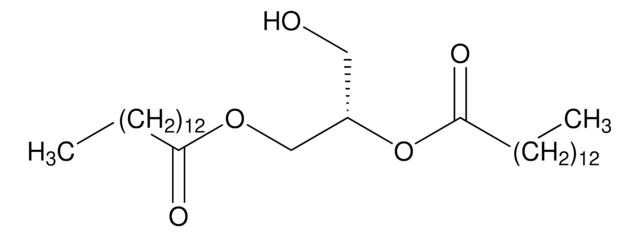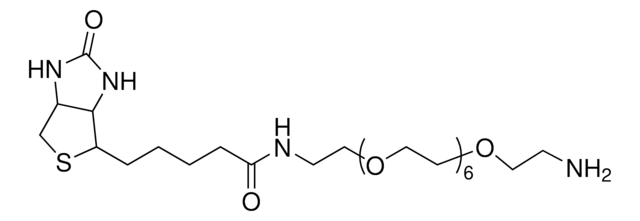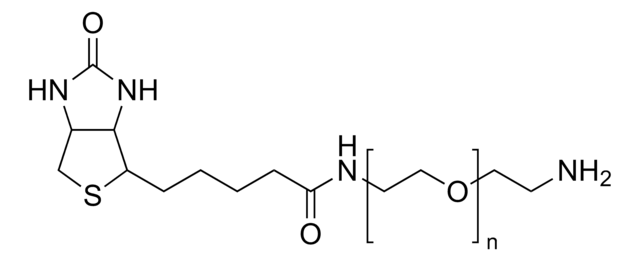Wichtige Dokumente
QBD10776
dPEG®48-biotin acid
>90% (HPLC)
Synonym(e):
Biotin-PEG-acid, Biotin-PEG48-COOH, PEG2000 biotin acid, PEG48-biotin acid
About This Item
Empfohlene Produkte
Assay
>90% (HPLC)
Form
solid or viscous liquid
Eignung der Reaktion
reaction type: Biotinylations
reaction type: Pegylations
Polymerarchitektur
shape: linear
functionality: monofunctional
Versandbedingung
ambient
Lagertemp.
−20°C
Leistungsmerkmale und Vorteile
Automate your Biotin tagging with Synple Automated Synthesis Platform (SYNPLE-SC002)
Rechtliche Hinweise
Lagerklassenschlüssel
11 - Combustible Solids
WGK
WGK 3
Flammpunkt (°F)
Not applicable
Flammpunkt (°C)
Not applicable
Hier finden Sie alle aktuellen Versionen:
Analysenzertifikate (COA)
Leider sind derzeit keine COAs für dieses Produkt online verfügbar.
Wenn Sie Hilfe benötigen, wenden Sie sich bitte an Kundensupport
Besitzen Sie dieses Produkt bereits?
In der Dokumentenbibliothek finden Sie die Dokumentation zu den Produkten, die Sie kürzlich erworben haben.
Unser Team von Wissenschaftlern verfügt über Erfahrung in allen Forschungsbereichen einschließlich Life Science, Materialwissenschaften, chemischer Synthese, Chromatographie, Analytik und vielen mehr..
Setzen Sie sich mit dem technischen Dienst in Verbindung.








![O-[2-(Biotinyl-amino)-ethyl]-O′-(2-carboxy-ethyl)-undecaethylenglykol ≥95% (oligomer purity)](/deepweb/assets/sigmaaldrich/product/structures/445/096/aadb4590-ea90-4e6c-835d-a9aef2828e9a/640/aadb4590-ea90-4e6c-835d-a9aef2828e9a.png)